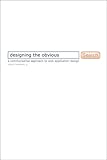Last Monday CNET announced on their Outside the Lines blog that a redesign is underway. Normally I enjoy seeing new designs released, but not this time. I’m a big fan of CNET’s current design. It’s got a great look, and it’s inspired elements of designs I’ve worked on before.
The new design, which they showed a few screenshots of, just looks…bad. It looks generic and not well-thought out. There’s less whitespace, and the navigation doesn’t look as usable. I don’t particularly enjoy critiscising other designers’ work, but this…just isn’t as good. It’s several steps backward.
See a preview of the new design here. Then compare it to the current version.
The announcement has several pages of comments consisting mainly of people pointing out why the don’t like the redesign, with a few people who do like it mixed in. Will the management pay attention though? I find it a little disturbing that the author of the post said
From some of the commenters it appears the paint job framing the content is more important than the content. Yellow, red, green, blue, black whatever. We came up the cleaner look and updated logo for presenting content. Beauty is only skin deep….
So Mr. Farber went from detailing why CNET “needs” a redesign, and why the design is important, to saying the design is irrelevant? Besides, the abundant comments aren’t just about the change of colors. The new design just doesn’t look as usable, nor as unique.

 I recently came a across a mention online of
I recently came a across a mention online of 

 The first thing most people think when they turn a Mac on for the first time is something along the lines of “Wow. This looks cool.” Then the next thing you notice, or more accurately, don’t notice, is the act of using the OS. Once you get used to how everything works, which doesn’t take long if you’ve used another OS (read: Windows) before, you don’t have to think about it. It’s intuitive enough that you just do what you need to do without having to think about it much. You don’t have to worry about the OS itself much either, except when you need to do some occasional maintenance.
The first thing most people think when they turn a Mac on for the first time is something along the lines of “Wow. This looks cool.” Then the next thing you notice, or more accurately, don’t notice, is the act of using the OS. Once you get used to how everything works, which doesn’t take long if you’ve used another OS (read: Windows) before, you don’t have to think about it. It’s intuitive enough that you just do what you need to do without having to think about it much. You don’t have to worry about the OS itself much either, except when you need to do some occasional maintenance.









